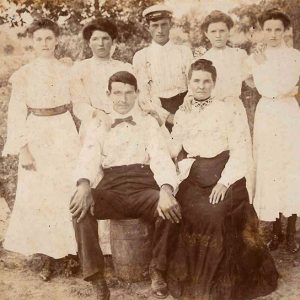calsfoundation@cals.org
Island 37
aka: Andy Crum (Lynching of)
aka: Bert Springs (Lynching of)
Island 37 is a stretch of land that is in the legal possession of the State of Tennessee but is physically joined to Arkansas. Because competing claims of jurisdiction left it in something of a legal void, Island 37 became, in the early twentieth century, an outpost for bootleggers and other criminals. Police action taken against those criminals resulted in one of the many U.S. Supreme Court cases regarding ongoing boundary disputes between Arkansas and Tennessee.
The Mississippi River is a dynamic waterway, often cutting new channels and thus either forming islands or causing former islands to merge with the eastern or western banks. The legal principle of avulsion holds that land cut off by the river from one state and joined to another due to the changing flow of the river does not become the property of the new state to which it is joined. On March 7, 1876, the river cut a path through a section of Tennessee land known as Devil’s Elbow; subsequently, the channel that previously went around the land partially dried up, leaving the land, for all practical purposes, a part of Arkansas. Decades of boundary disputes between the two states followed with regard to Devil’s Elbow, designated Island 37 by the United States government.
The nebulous legal status of the “island” made it the perfect refuge for criminals. After all, they could claim to be occupying Tennessee land and thus not under Arkansas jurisdiction. For lawmen from Tipton County, Tennessee, to mount an expedition across the river was expensive, and those on the island were frequently tipped off in advance to raids from that quarter. In 1911, “blind tigers,” places that sold bootleg whiskey, appeared on the island. The outlaws were reportedly led by Andy Crum, who owned more than 400 acres of land on the “island.”
Believing that he had jurisdiction over the area, Sheriff Sam Mauldin of Mississippi County led a raid on Island 37 on the morning of July 31, 1915, taking with him a detachment of the state militia. The sheriff was killed leading a charge against an establishment owned by Crum, who was captured later that day while hiding in a cotton field. Outraged Arkansas citizens reportedly burned down all criminal establishments upon hearing of Mauldin’s death. The mob also attacked an African-American man named Bert Springs, who later died of his wounds.
The following day, Tipton County, Tennessee, authorities demanded that Mississippi County turn over its prisoners to Tennessee, but they were refused. Crum and others swiftly hired lawyers who planned to argue that the prisoners should rightly be tried for their crimes in Tennessee. However, this did Crum little good, as on August 12, a group of armed men broke into the jail in Osceola (Mississippi County) and shot him to death; an inquest the next day failed to hold anyone responsible for the murder, and no one was ever arrested. Soon, rumors spread that Tennesseans were intent upon crossing the river and liberating the remaining prisoners by force, and Governor George Washington Hays called out the Arkansas National Guard to prevent that from happening. No such force from Tennessee appeared, and the prisoners were tried and convicted in an Arkansas court.
However, the swift dispatching of these bootleggers and other criminals did not halt the legal battle between Arkansas and Tennessee over their boundary. The contention between the two states went all the way to the U.S. Supreme Court, which, on March 4, 1918, ruled that the boundary “should now be located according to the middle of that channel as it was at the time the current ceased to flow therein as a result of the avulsion of 1876,” leaving Island 37 in the hands of the State of Tennessee. Island 37 is today covered in cotton and soybean fields, with only a handful of small farm houses upon the land, though a few roads leading into Arkansas do service the area.
For additional information:
Daniels, Richard S. “Blind Tigers and Blind Justice: The Arkansas Raid on Island 37, Tennessee.” Arkansas Historical Quarterly 38 (Autumn 1979): 259–270.
State of Arkansas v. State of Tennessee, 246 U.S. 158 (1918). http://supreme.justia.com/us/246/158/case.html (accessed October 3, 2022).
Staff of the CALS Encyclopedia of Arkansas










Comments
No comments on this entry yet.